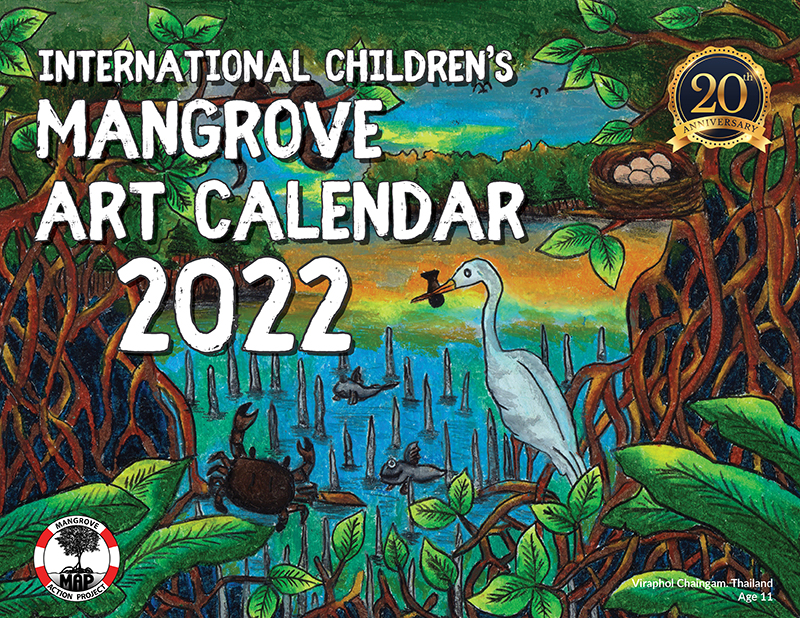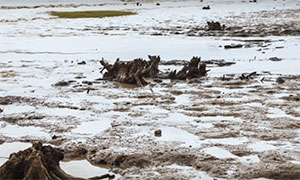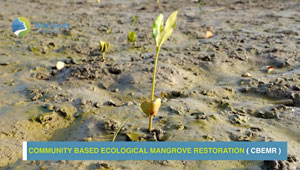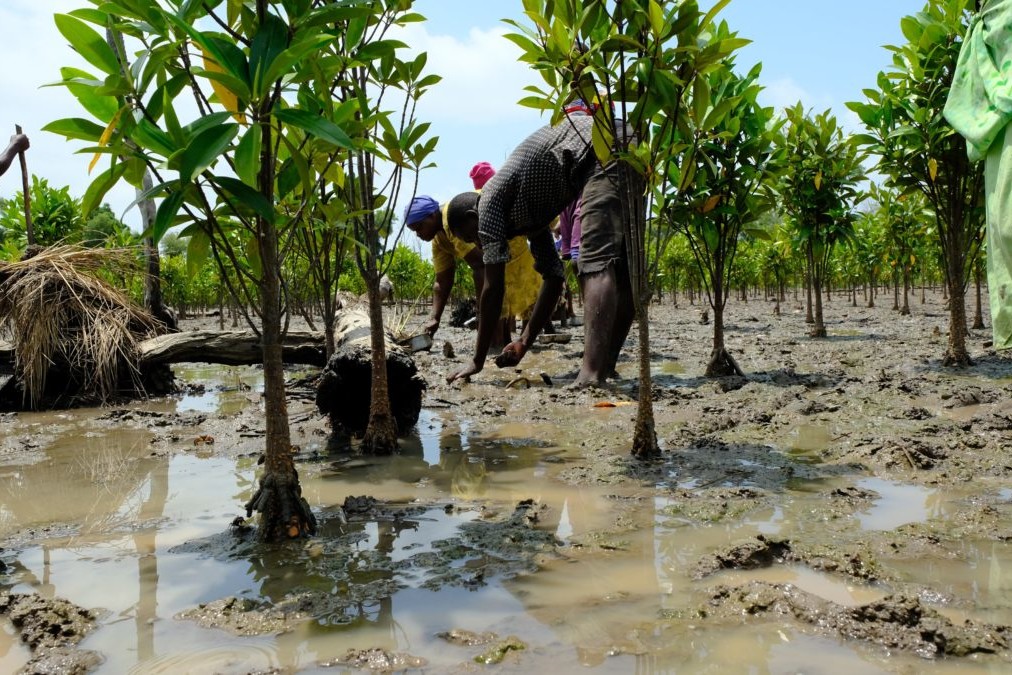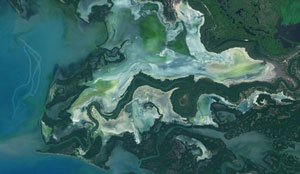|
The MAP News |
|
|
FEATURED STORY
Rare freshwater mangroves discovered
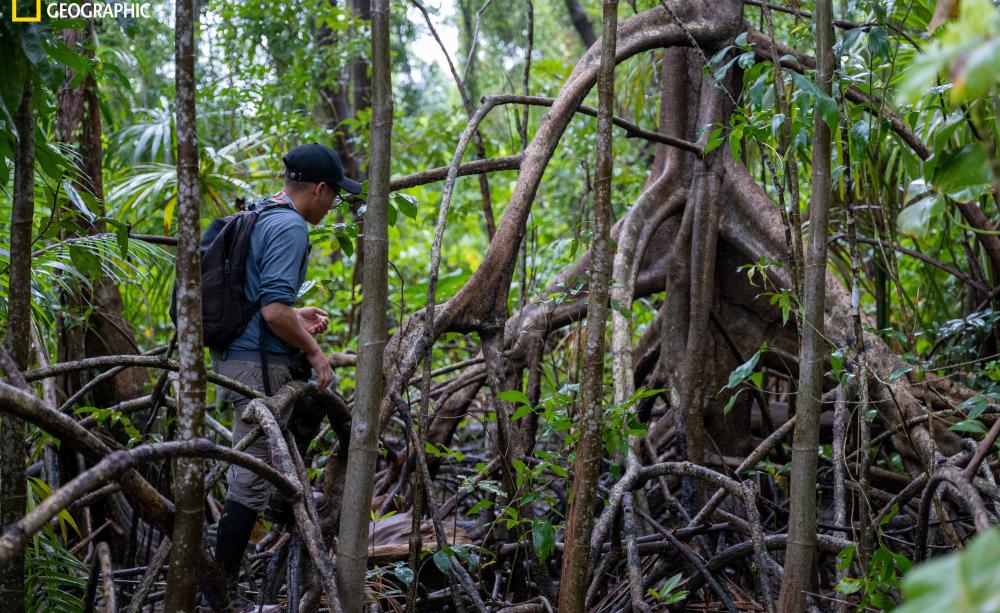 BRAZIL - Freshwater mangroves have been discovered in the Amazon Delta for the first time - suggesting ecosystem adaptability to the river flow. This study is the first scientific finding published as part of the National Geographic and Rolex Perpetual Planet Amazon Expedition, a two-year exploration of the Amazon River Basin from the Andes to the Atlantic. Angelo Bernardino and Thiago Silva, both National Geographic Explorers, conducted the first exploration of 11 mangrove forests along the Amazon Delta in April this year (2022). The Explorers analyzed data from the soil pore water, salinity, composition and tree density and volume using 3-D laser scanning from the ground and from drones. Their findings have been published in the journal, Current Biology. Bernardino, a marine ecologist, told The Ecologist: "It was fascinating. At first, I was confused because we were not seeing the same forests we are used to seeing all over Brazil. In the Amazon Delta, the forests have this unique mixture of freshwater plants. READ MORE
GLOBAL
CONTEST CLOSES - MANGROVE PHOTO CONTEST RECEIVES RECORD NUMBER OF ENTRIES 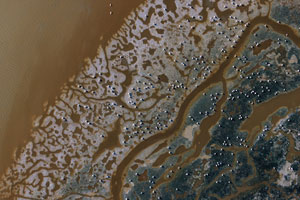 Check out our biggest mangrove photo gallery with over 2200 submissions from 68 countries! CLICK HERE Global Awareness Critical to Protect World's Mangroves
 LIBERIA - Time is running out to protect the world's mangroves which are not only home to many species but also an important hedge against climate impacts, the head of the UN Educational, Scientific and Cultural Organization (UNESCO) said recenty. Audrey Azoulay, the UNESCO Director-General, called for greater global awareness about these critical coastal areas in her message to mark the International Day for the Conservation of the Mangrove Ecosystem. It is estimated that more than three quarters of mangroves in the world are now threatened, "and with them all the fine balances that depend on them", she said. Ms. Azoulay announced that next month, UNESCO will launch a new mangrove restoration project in seven Latin American countries: Colombia, Cuba, Ecuador, El Salvador, Mexico, Panama, and Peru. The project will bring economic opportunities to local communities. It will also facilitate the exchange and sharing of knowledge between local and indigenous populations and the scientific community. "Beyond protection and restoration, we need global awareness. This requires educating and alerting the public, not only in schools, but wherever possible," she said. READ MORE AMERICAS
Cayman Island Art Sale On Today
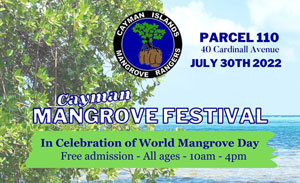 CAYMAN ISLANDS - The Mangrove Rangers will be at Parcel 110 this Saturday 10am-4pm for our second annual Mangrove Art Festival! Refreshments, activities and art on display all day, fun for the whole family! We will have activities and games all day with a DIY mangrove costume contest and fashion show at 2:30pm, judged by Miss Cayman Universe! Social mixer and happy hour will start at 3pm and go until the event closes at 4pm. We hope to see you there!. READ MORE
Crabbers face danger and poverty to save Ecuador's mangroves
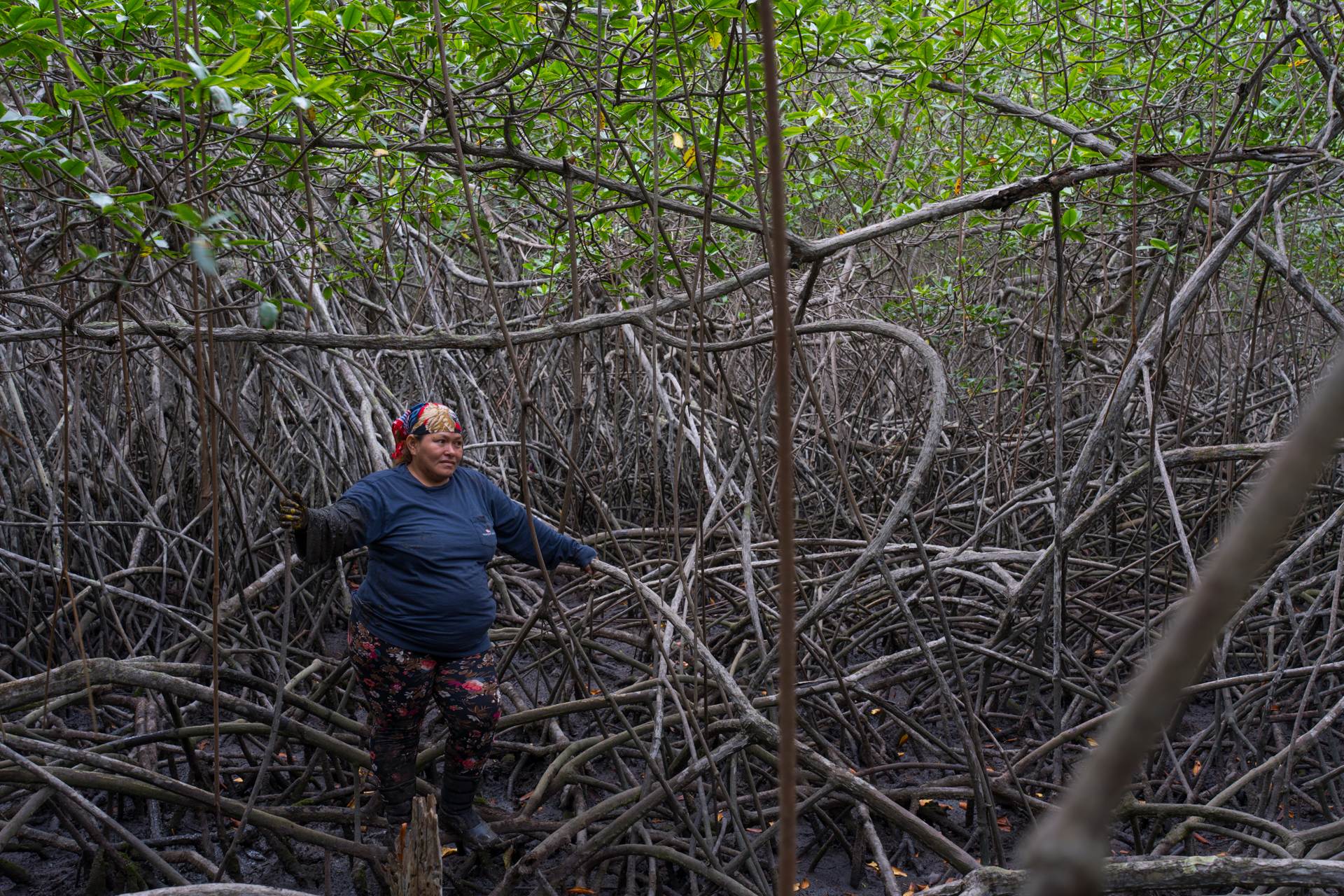 ECUADOR - The small motorboat left the dock at the end of Neiva Carrascal's street and hummed out into the ocean off the southern coast of Ecuador, keeping close to the shore lined with tangled branches of mangroves. Every day, Carrascal and 80 others from her port community in the city of Machala go out to collect the crabs that burrow in the mud among the mangrove roots, a job her family has been doing for generations as crabbers, or cangrejeros. On a recent trip out, another group of crabbers warned Carrascal's group about new markings they had spotted on trees farther north, an indication that shrimp farmers were planning to illegally cut down mangroves to expand their shrimping pools. Shrimp farmers often encroach on crab catching areas and go to extreme lengths to keep crabbers away, from hiring armed guards to training dogs to swim out and attack oncoming boats, she said. "Not long ago, I was with my husband and other companions and we had to climb up on some of the branches because the dogs wanted to kill us," Carrascal, 42, told the Thomson Reuters Foundation, after a day spent crawling through mangrove branches and wading in mud up to her shoulders. READ MORE
Coastal communities find a natural haven in mangroves
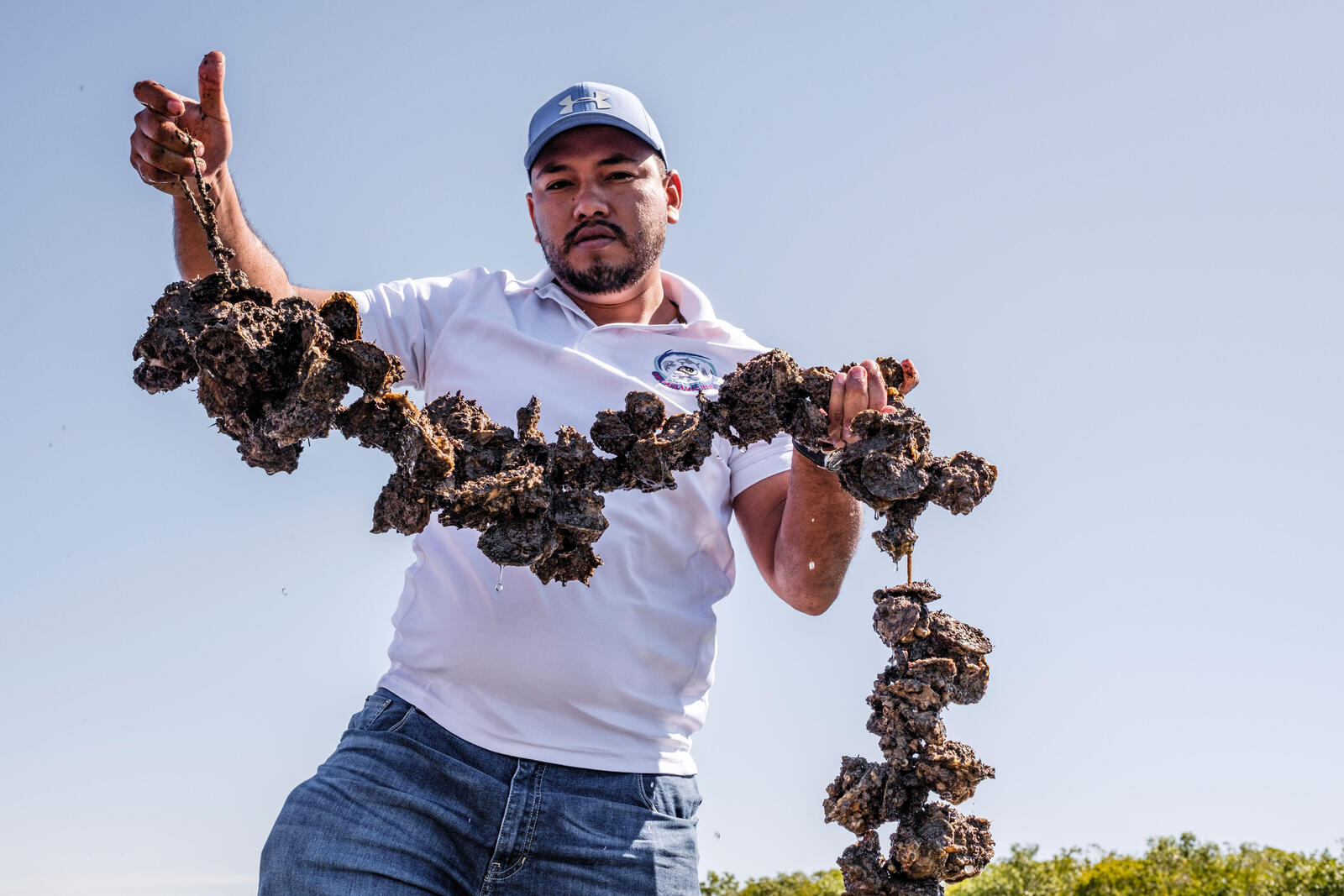 MEXICO - “We need this whole ecosystem to support our business,” says Pedro Alfonso López González, president of a fishing and oyster farming cooperative in Boca de Camichín, a small town on Mexico’s west coast. It’s a refrain heard often along the country’s coastline as communities rely on healthy mangrove forest ecosystems that help sustain abundant sea life and clean, reliable fresh water for their income and everyday needs. In his role at the cooperative, Alfonso works with oyster farmers as they navigate personal, business, and ecological challenges. Together, they collaborate to develop resilient business models, and advocate for a healthy mangrove environment that sustains them all. Below are just some of the dedicated people WWF is working with or are key stakeholders to protect and restore mangroves on the Yucatan Peninsula and the Pacific coast in Nayarit. READ MORE
Children learn about the importance of mangrove ecosystems
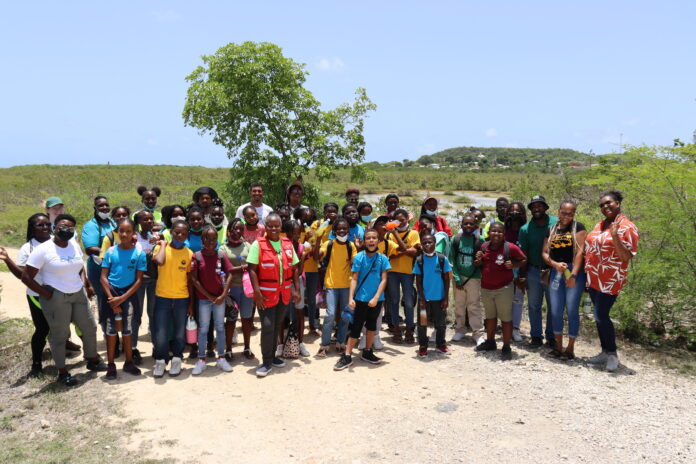 ANTIGUA - Local organisations came together to celebrate International Day for the Conservation of Mangrove Ecosystems, marked annually on July 26. The day was designated by UNESCO in 2015 to raise awareness of the integral role of mangrove ecosystems as unique, special and vulnerable – and to promote solutions for their conservation, sustainable management and utility. The Department of the Blue Economy, the Department of Environment, and the Environmental Awareness Group (EAG) joined forces to host a field trip for children attending the National Public Library Summer Camp. Youngsters were informed about the various species of mangroves, as well as the rich biodiversity that such ecosystems support. Children had the opportunity to see firsthand local mangrove ecosystems, and they were also provided with guidance on how they can play a role in protecting mangroves for generations to come. Students were also given learning and activity material developed by the Department of Environment to improve their knowledge about their local environment. READ MORE
ASIA
Indonesia’s mangrove restoration bid holds huge promise, but obstacles abound
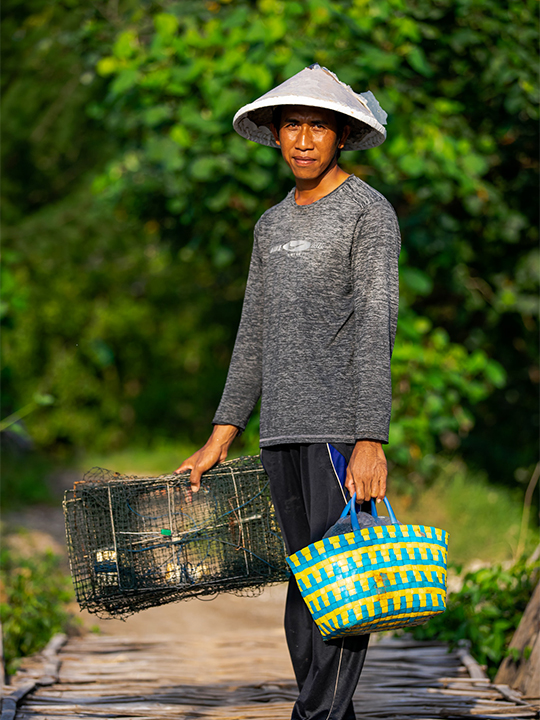 INDONESIA - Mangroves absorb more carbon per hectare than inland forests, making them particularly important in the fight against climate change. Indonesia has pledged to reduce its carbon emissions by 29% by 2030, independently, from a 2010 base year, or by 41% with international assistance. Mangroves also yield forest products and wild fish and serve as buffers to protect coastlines against extreme weather events like tsunamis. Despite these benefits, much of Indonesia’s mangroves have been cleared to make way for fish farming. In Gorontalo province on the island of Sulawesi, for example, more than 90% of the mangroves in the Tanjung Panjang Nature Reserve have been illegally cleared to make way for shrimp and fish ponds, according to Nurain Lapolo, director of the Advocacy Network for Natural Resources Management (JAPESDA), a local conservation group. READ MORintensivesE
The environmental hazards of intensive shrimp farming on the Mekong Delta
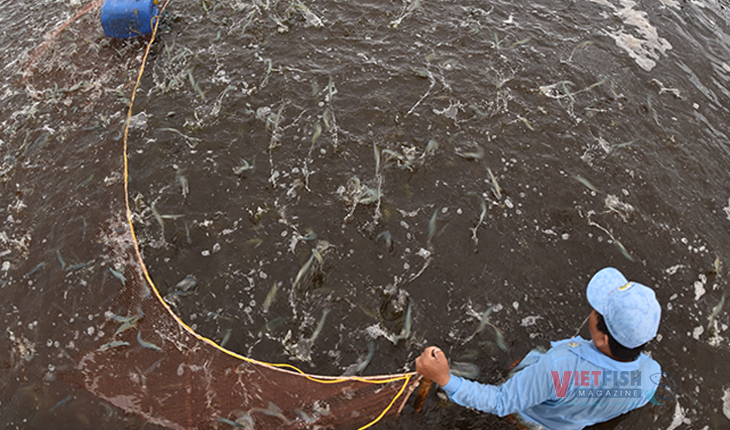 VIET NAM - Like many small-scale shrimp producers in this part of Vietnam, shrimp farmer Nguyen Manh Hung has been using an intensive method of farming focused on producing high yields. In these models, farmers clear as much of their property as possible to make way for earthen shrimp ponds, often lined with tarpaulin. "Back then we farmed shrimps in ponds, dug by hand and then machines when we got money," Hung remembered. "You had to ... fell trees to make the ponds: one big main pond, one pond for processing, and three smaller ponds on the side." But with no trees to hold nutrients in the soil or keep the salty water table down, Hung's farm was completely exposed to the elements. As well as drought, a series of devastating floods in 2002, 2008, and 2016 ripped more sediment from the banks of his ponds, and his land eventually became so badly degraded that he could no longer use it. After years of borrowing money, failed harvests, and the loss of his entire farm, the family was over $1 million in debt to the bank, he said. READ MORE
Bangladesh needs mangroves and embankments, say locals and experts
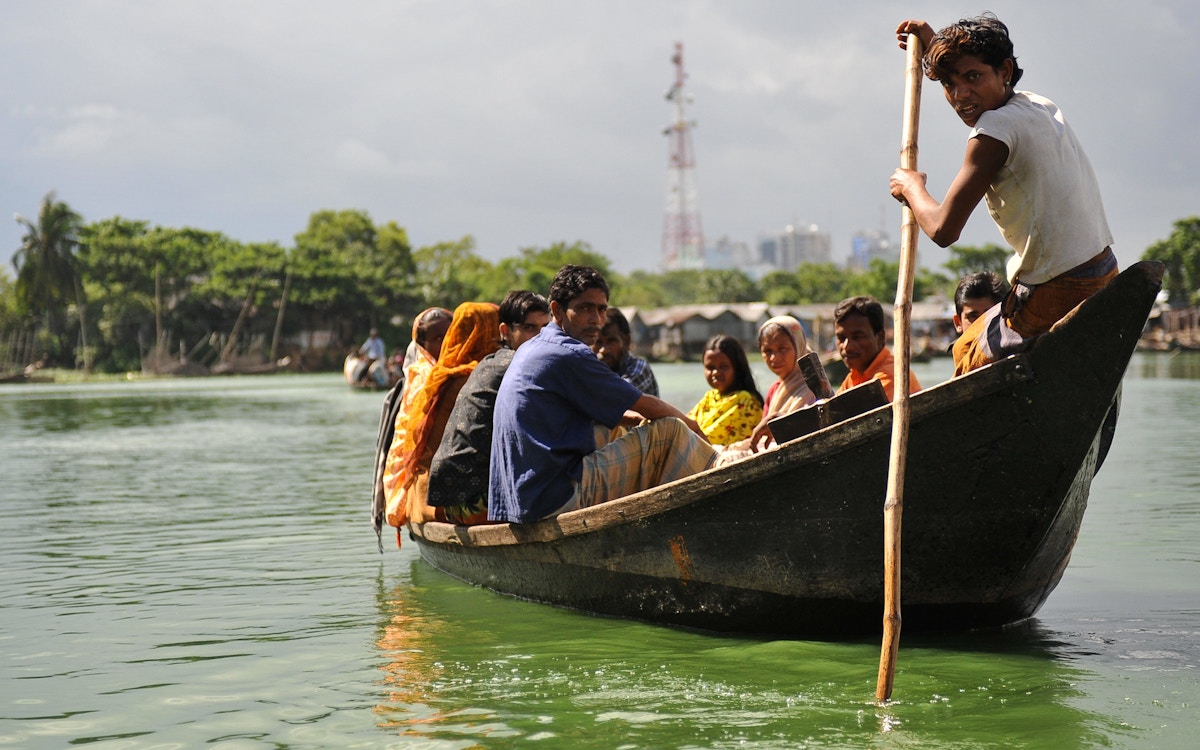 BANGLADESH - Notobor Malo plants mangroves next to his home every year to halt erosion by the rising sea. Some saplings die, but some survive to protect his riverside home in Mathurapur, a village in the Satkhira district in southwestern Bangladesh. Close to where the Arpangachhia River flows into the Bay of Bengal, saving Malo’s home is becoming more difficult as tides get higher due to the impacts of climate change. Still, he keeps trying. The world’s largest mangrove forest, the Sundarbans, is on the bank of another nearby river, the Malancha, a tributary of the Ganga. It costs Malo nothing to pick saplings there. The government has pursued a different strategy. Thirteen coastal districts of Bangladesh have 5,810 kilometres of earthen embankments that were constructed in the 1960s as part of the coastal embankment project (CEP), which morphed into the coastal embankment improvement project (CEIP). But cracks in the embankments are a constant problem. Worse, embankments can collapse when a big cyclone hits. READ MORE
OCEANA
Climate change killed 40 million Australian mangroves in 2015. Here’s why they’ll probably never grow back
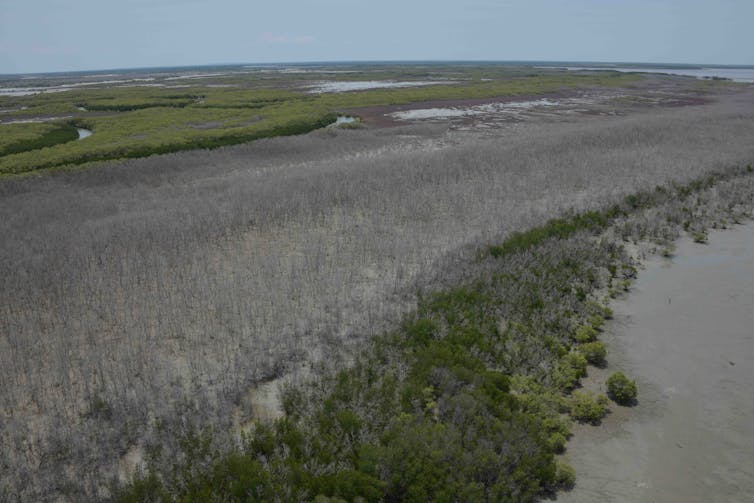 AUSTRALIA - In the summer of 2015-2016, some 40 million mangroves shrivelled up and died across the wild Gulf of Carpentaria in northern Australia, after extremely dry weather from a severe El Niño event saw coastal water plunge 40 centimetres. The low water level lasted about six months, and the mangroves died of thirst. Seven years later, they have yet to recover. My new research, published today, is the first to realise the full scale of this catastrophe, and understand why it occurred. This event, I discovered, is the world’s worst incidence of climate-related mangrove tree deaths in recorded history. Over 76 square kilometres of mangroves were killed, releasing nearly one million tonnes of carbon into the atmosphere. But this event, while unprecedented in scale, is not unique. My research also discovered evidence of another mass die-back of mangroves in the region in 1982 – the same year the Great Barrier Reef suffered its first mass bleaching event. READ MORE
Like this newsletter? *Articles in this newsletter may mention practices being used and/or show exagerated results being claimed without proof. Stories are presented here in effort to show mangrove related activity around the world and do not necessarily reflect Mangrove Action Project's views or mangrove restoration best-practices. |
ACTION ALERTS
MAP Website en Español
13 Year old Linda Li "Mangrove Adventure" from Kid Dream Art School
Video: Mangroves for the Future WANT TO GET INVOLVED?
Like this newsletter? Pease consider donating to MAP to keep it going. Giving could never be easier
Interested in connecting or working with MAP? Check out our opportunities here MANGROVE ISSUES Want to learn more about mangroves? What is CBEMR? Download MAP's 2 page CBEMR Information Sheet containing links to all MAP's CBEMR resources – CLICK HERE View MAP’s uploaded Videos at Question Your Shrimp Consumer/Markets Campaign! Mangroves: Guidebook to Malaysia – Click Here SHARE MAP'S VISION Our short documentary, Reducing the Risk of Disaster through Nature-Based Solutions : Mangroves
Marvellous Mangroves Curriculum The Marvellous Mangroves Curriculum begins with a simple philosophy – getting future generations to not only learn about, but understand the importance of mangrove forests. VISIT
Marvellous Mangroves Curriculum in Bangladesh - WATCH VIDEO
Like this newsletter? Pease consider donating to MAP to keep it going. Giving could never be easier
"Question Your Shrimp" Campaign Question Your Shrimp - is it really sustainable? Sign the Petition
We strive to keep active links in our newsletter. However, due to circumstances beyond our control, occasionally links to stories may become broken. If you find a link to a story is not functioning, please cut and paste the headline into your browser search bar. In most cases you should be able to locate the original story. Not yet a MAP News subscriber?
|
|
Mangrove Action Project Click here to view past newsletters
|
|
Search News Archive
Saturday, July 30, 2022
MAP News Issue 551 - July 30, 2022
Art Sale in Cayman Islands!
Reminder!
The Mangrove Rangers will be at Parcel 110 this Saturday 10am-4pm for our second annual Mangrove Art Festival!
Refreshments, activies and art on display all day, fun for the whole family!
We will have activities and games all day with a DIY mangrove costume contest and fashion show at 2:30pm, judged by Miss Cayman Universe!
Social mixer and happy hour will start at 3pm and go until the event closes at 4pm
We hope to see you there!
Saturday, July 16, 2022
MAP News Issue # 550, July 16, 2022
MAP Website en Español haga clic aqui
|
The MAP News |
|
|
FEATURED STORY
Do not sacrifice Congo's rainforests to the oil industry! 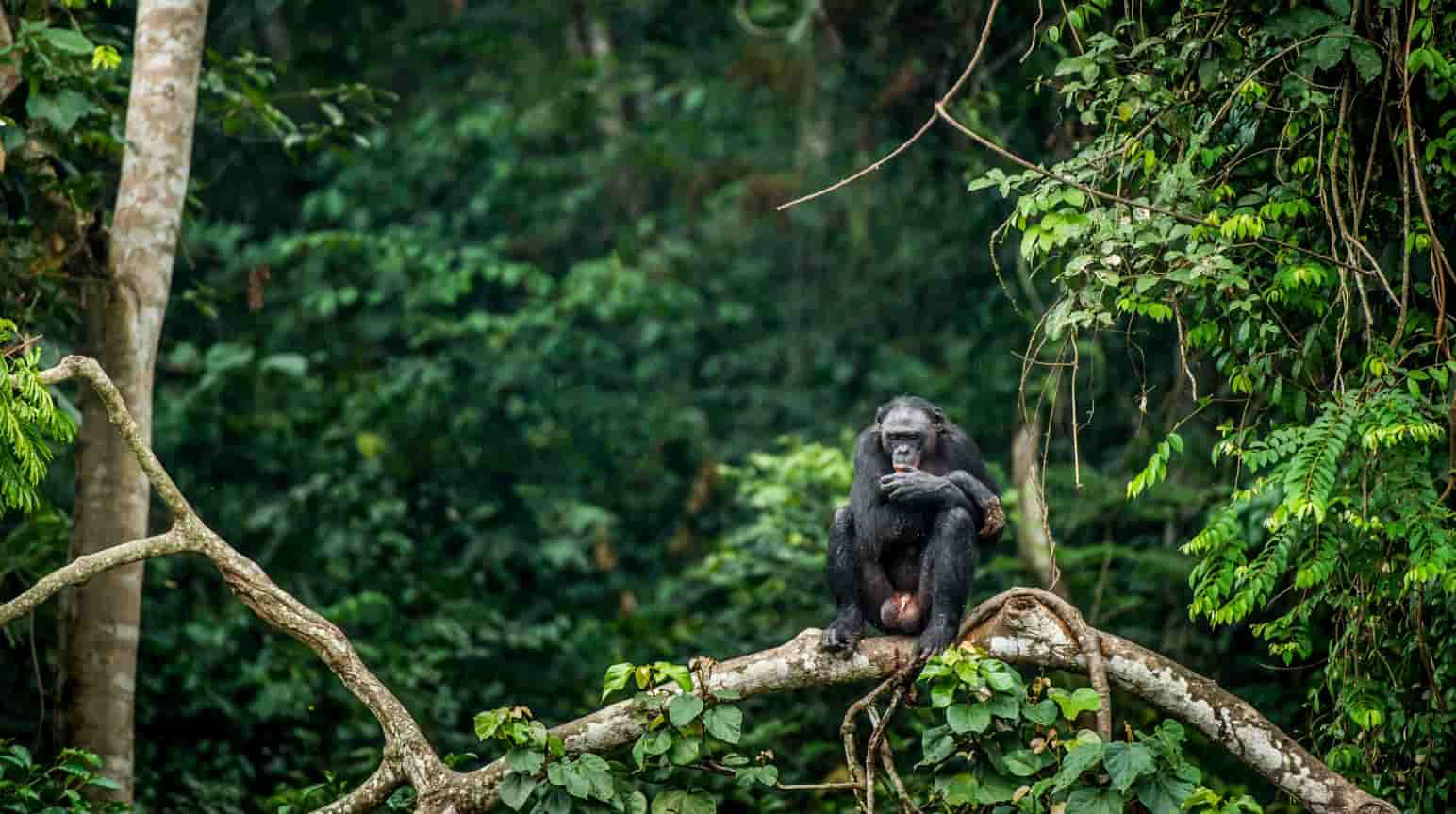 CONGO - The rainforests of the Congo Basin are home to millions of people and countless animal and plant species, including three great apes: chimpanzees, bonobos and gorillas. They are a treasure trove of biodiversity and crucial to the fight against climate change. Despite this, the government of the Democratic Republic of Congo (DRC) plans to auction 16 oil blocks in late July. The blocks cover some of the last remaining intact forests on earth that are home to thousands of local and indigenous communities. Three of them overlap the Cuvette Centrale peatlands, one of the world’s largest carbon sinks estimated to store 30 billion tons of carbon, the equivalent to one years’ worth of global emissions. Nine oil blocks overlap protected areas. More than half of the Congo Basin's peatlands and 60 percent of its rainforest are in the DRC, the country plays a key role in the fight against the climate crisis. The science is clear: the governments of the world must cut carbon emissions in half within the next eight years. The oil plan not only undermines global efforts and threatens the Paris Agreement's goal of limiting global warming. It also threaten the livelihoods of thousands of local, mostly indigenous communities. READ MORE GLOBAL LAST WEEK FOR SUBMISSIONS! Mangrove Photography Awards 2022  GLOBAL - The Mangrove Photography Awards 2022 is open for entries and we wanted to invite you to enter your favourite mangrove images to help shine a light on our world’s mangrove forests.Click here for more information and to submit photos.There are some great prizes to be won, including $500 for the overall Mangrove Photographer of the Year, exciting new judges to view your work, and we're aiming to make this years' the most impactful yet! Your contribution to mangroves through the power of imagery will be celebrated on 26th July, World Mangrove Day, when we will showcase everyone’s entries as an online mangrove exhibition. Contact leo@mangroveactionproject.org Climate change in oceanwater may impact mangrove dispersal, study finds 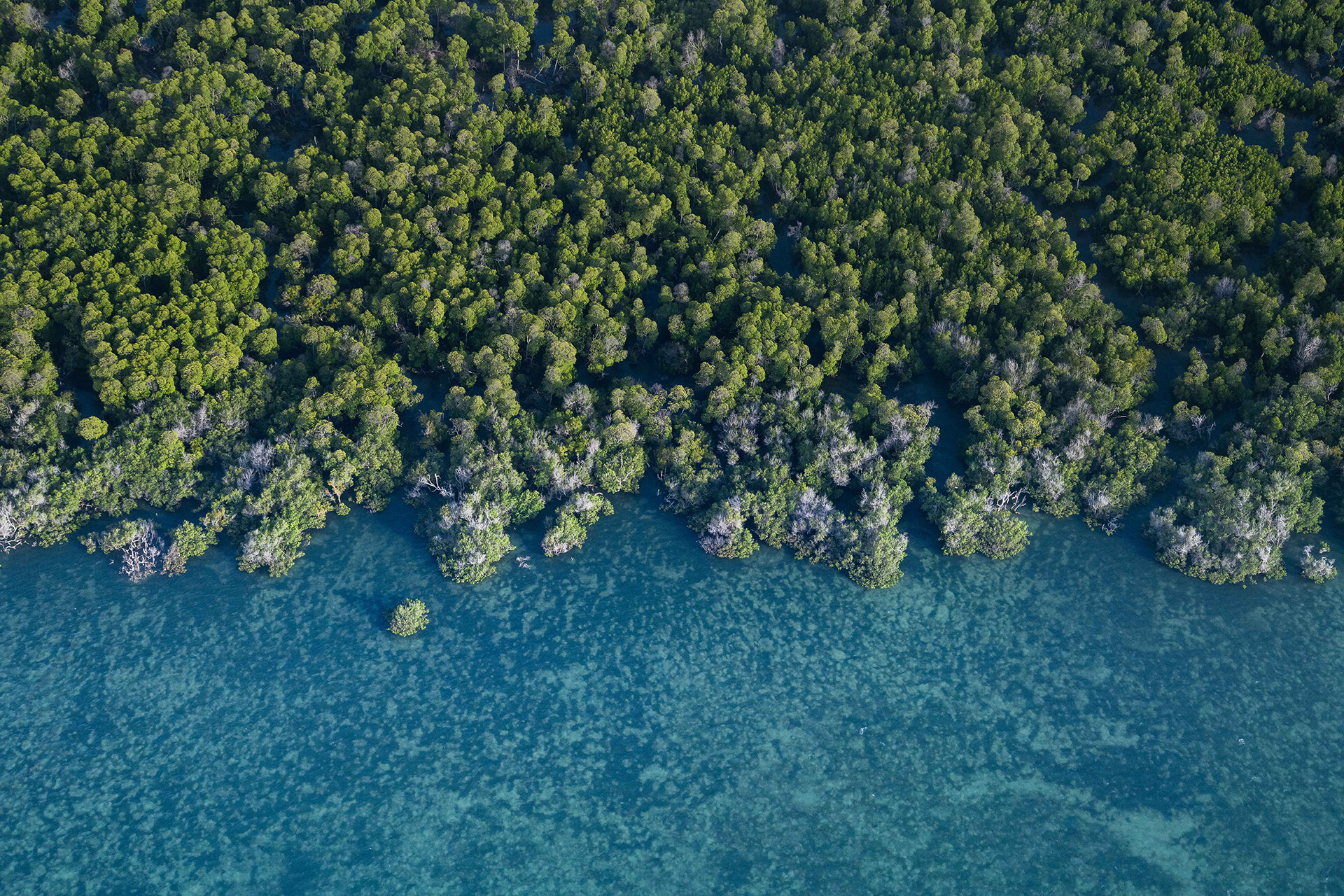 GLOBAL - International research led by Dr. Tom Van der Stocken of the VUB Biology Department examined 21st century changes in ocean-surface temperature, salinity, and density, across mangrove forests worldwide. The study suggests that changes in surface-ocean density may impact the dispersal patterns of widely distributed mangroves species, and more likely so in the Indo-West Pacific region, the primary hotspot of mangrove diversity. The study is published in Nature Climate Change. Climate change affects sea-surface density via changes in temperature and salinity. Since propagules of widely distributed mangroves species have densities near that of seawater, changes in ocean density hold implications for oceanic dispersal of mangroves. Whether mangrove propagules float or sink depends on the difference between the densities of the propagules and that of the surrounding water." says Tom Van der Stocken, Marie Sk?odowska-Curie Postdoctoral Scholar at Vrije Universiteit Brussel, and research affiliate at the NASA Jet Propulsion Laboratory. "It is expected that warming winter temperatures and sea level rise will impact the distribution of these carbon-rich forests, but changes in surface-ocean properties might also influence distributional patterns through dispersal. READ MORE How much is a mangrove forest worth? In some places, $850,000 per hectare.  GLOBAL - While proponents of environmental restoration often talk about ecological benefits, people controlling the purse strings think in dollars and cents. So what happens when conservationists use the cold calculus of money to decide whether a costly project makes sense? For mangrove forests and coral reefs in the Caribbean, new research suggests that in many cases the work pays off. The results point to ways that underfunded environmental projects could get a boost by tapping into the much bigger pool of money available for recovery from natural disasters such as hurricanes. “Recovery funding will grow as climate change increases the impacts from storms, and environmental funding will likely shrink as national budgets are strained by natural disasters,” said Michael Beck, a researcher at the University of California, Santa Cruz, who led the work. “Funding for artificial infrastructure such as seawalls can be redirected to natural defenses, which provide multiple benefits beyond coastal protection.” READ MORE AFRICA A Mangrove Project is the Star of Kenya’s Gazi Bay  KENYA - The forest located in the South of the country is a blue carbon ecosystem. Meaning that it captures and stores huge amounts of carbon. Local residents manage two hundred ninety 290 acres of forest to earn a living. Some like Juma belong to the Mikiko Pamoja group. The collective, which means ‘mangrove together’ in Swahili plants seedlings. The work earns them ‘carbon credits’ which are awarded for each ton of greenhouse gas emissions removed from the atmosphere. Selling these credits on has earned them 3 million Kenyan shillings (around 25,500 US dollars) this year. The sum helps them cover their needs. “We have benefited through water projects and therefore we don’t have to travel long distances in search of water anymore, member Juma tells. We now have fresh water taps in our houses for which we pay lower charges that cater for the electricity cost only.” The positive impact of the work has inspired a growing number of residents. The project receives technical support from Kenya Marine and Research Institute. Kenya’s mangrove cover dropped from 60,000 hectares in 2017 to 52,800 hectares in 2021. But through government and community work, the habitat is recovering. Research has shown that coastal ecosystems store more carbon than terrestrial forests. The Mikiko Pamoja group plant 4,000 trees annually. Mangroves account for 10% of Kenya’s total forest cover. READ MORE A closer look at Gambia's mangrove oyster sector 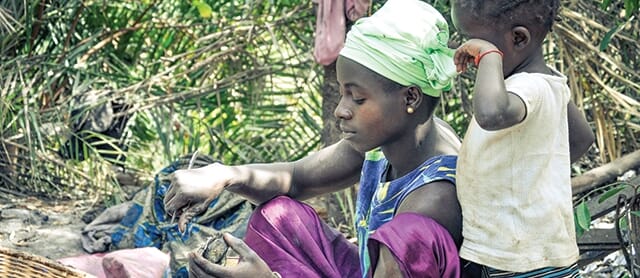 GAMBIA - Spurred by strong local demand, oyster production in The Gambia offers economic opportunity and social benefits, especially for women, according to an analysis presented on 29 June to experts and stakeholders, who discussed ways to reverse declining oyster stocks while improving safety and reducing the sector’s carbon footprint. “Mangrove oysters are a small-scale, artisanal sector with great value for the food security and livelihoods of women producers in our country,” said Musa Drammeh, Minister of Fisheries, Water Resources and National Assembly Matters at an event where the findings of an analysis of Gambia’s oyster value chain were presented. He added: “To ensure that future generations can also reap the benefits we need to make oysters stocks sustainable, improve safety and lessen the impact on the environment.” READ MORE AMERICAS The East-West Arterial Extension not looking good for Central Mangrove Wetland  Cayman Islands - The Central Mangrove wetland is currently under threat still by the EW arterial extension plan. The plan will be to cut about 10 miles through the wetland and remove many of wetland which is currently untouched, and extend through to woodland drive and then to north side. This stretch of road poses a direct threat to the Central Mangrove Wetlands. "The current proposed route would also result in the fragmentation of the wetlands, compounding the environmental threat to this critical habitat, which is already under threat from encroaching residential development". (quoted from CAYMAN NEWS SERVICE). An EIA (enviormental impact assessment) is to be carried out before any commencement on the arterial. It is our responsibility to the environment to urge our leaders to take another approach which will not damage the biological reliability of our island. You all can help to do your part by speaking to someone you know in power, or sharing this crucial information online and to people you're associated with. READ MORE The High Price of Cheap Shrimp 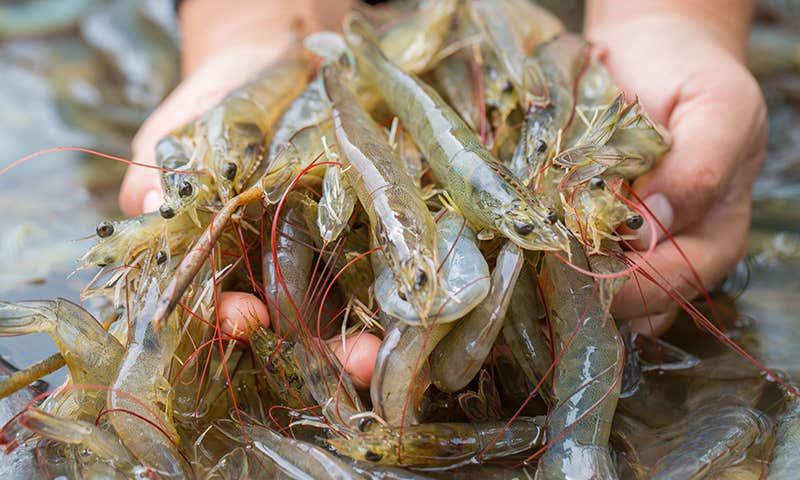 ECUADOR - Cristhian Castro sinks knee-deep into grayish mud. The endless tangle of aerial roots around him makes mangrove trees look as if they are standing on legs, ready to run off at any moment. Castro, 39, has been navigating this muddy maze in Ecuador’s Guayas River estuary six days a week for more than 25 years, hunting for delicious treasures. He is a cangrejero—artisanal crab catcher—and a fisherman, just like his father, and his father’s father. “We, the people who are here, living by the riverbanks, in the mangroves, we have a great love for nature,” says Castro. “Nature here has allowed us to dress and feed ourselves, and even that our children can study.” Castro is the president of the Puerto Envidia Association of Crabbers and Fishermen, and his group, along with other artisanal fishing associations, is increasingly at the forefront of the fight to protect the estuary’s ecosystem. Spilling across approximately 4,600 square miles, the Guayas River estuary is the largest on the Pacific coast of South America. Its network contains 23 tributaries, dozens of small islands, tidal flats, and around 60,800 hectares of mangrove forests that jut into the Gulf of Guayaquil. The city of Guayaquil, with almost 2.7 million inhabitants, sits at the estuary’s upper part, where the Daule and the Babahoyo rivers meet to form the Guayas. READ MORE For love of mangroves, Florida man hauls 10 tons of trash from Keys /cloudfront-us-east-2.images.arcpublishing.com/reuters/JMYGWAI3URKRDPYY634V2FZ7MI.jpg) USA - After years of watching trash build up in mangroves on the Florida Keys off his native Miami, Andrew Otazo began hauling out garbage to raise awareness about an ecosystem he has been enjoying since he was a teenager. The public relations professional and self-described "amateur mangrove trash collector" has over the past five years removed over 10 tons (20,000 pounds) of waste from barrier islands including Key Biscayne and from the surrounding waters. "As I got older and I learned more about the importance of the mangroves as a keystone ecosystem, I realized how much damage it was doing to local wildlife," said Otazo, 35, in an interview in Key Biscayne, where he now lives. Otazo acknowledges that stomping through mangroves and carrying bags of fetid trash on his back is not a long term solution to the problem - but says his work has gotten the attention of Miami residents and local politicians. The trash primarily comes from litter thrown onto streets in the Miami area that washes into storm drains and ends up floating into Biscayne Bay, says Otazo. READ MORE ASIA ‘White gold’: why shrimp aquaculture is a solution that caused a huge problem 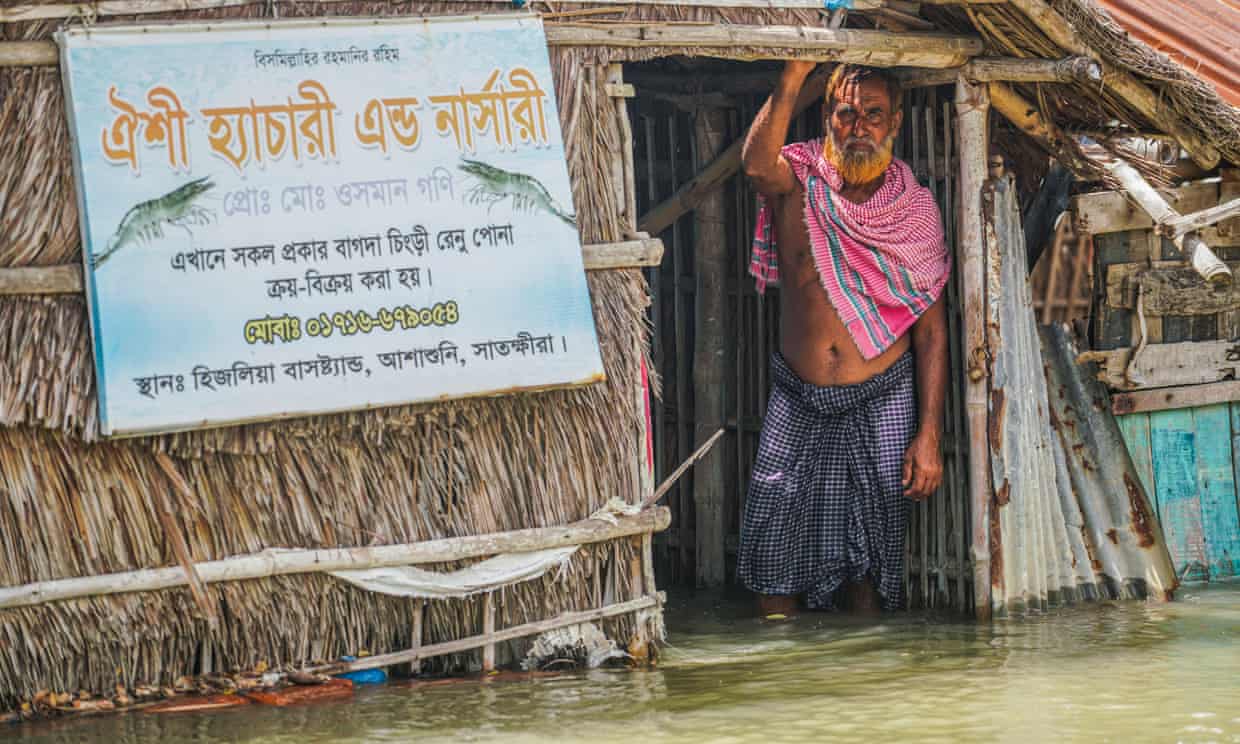 BANGLADESH - Backed by the Bangladeshi government, which saw tiger prawns, or shrimp as they are generally known, as a lucrative export opportunity, and development organisations that heralded the transition from paddy to pond as a clever climate-change adaptation, more than 275,000 hectares (680,000 acres) have been flooded, mostly in the south-west, for intensive aquaculture. If farmers could not keep seawater from poisoning their fields, they could use it to grow something else. It was a way to adapt, and for a while it worked. Commercial prawns, known as “white gold”, became one of Bangladesh’s most valuable exports. However, the trade-off for a few years of income has been decades of environmental degradation and sometimes violent conflict, showing how some adaptations can make people more, not less, vulnerable. READ MORE OCEANA Scientists discover an extra 76,000 hectares of mangroves 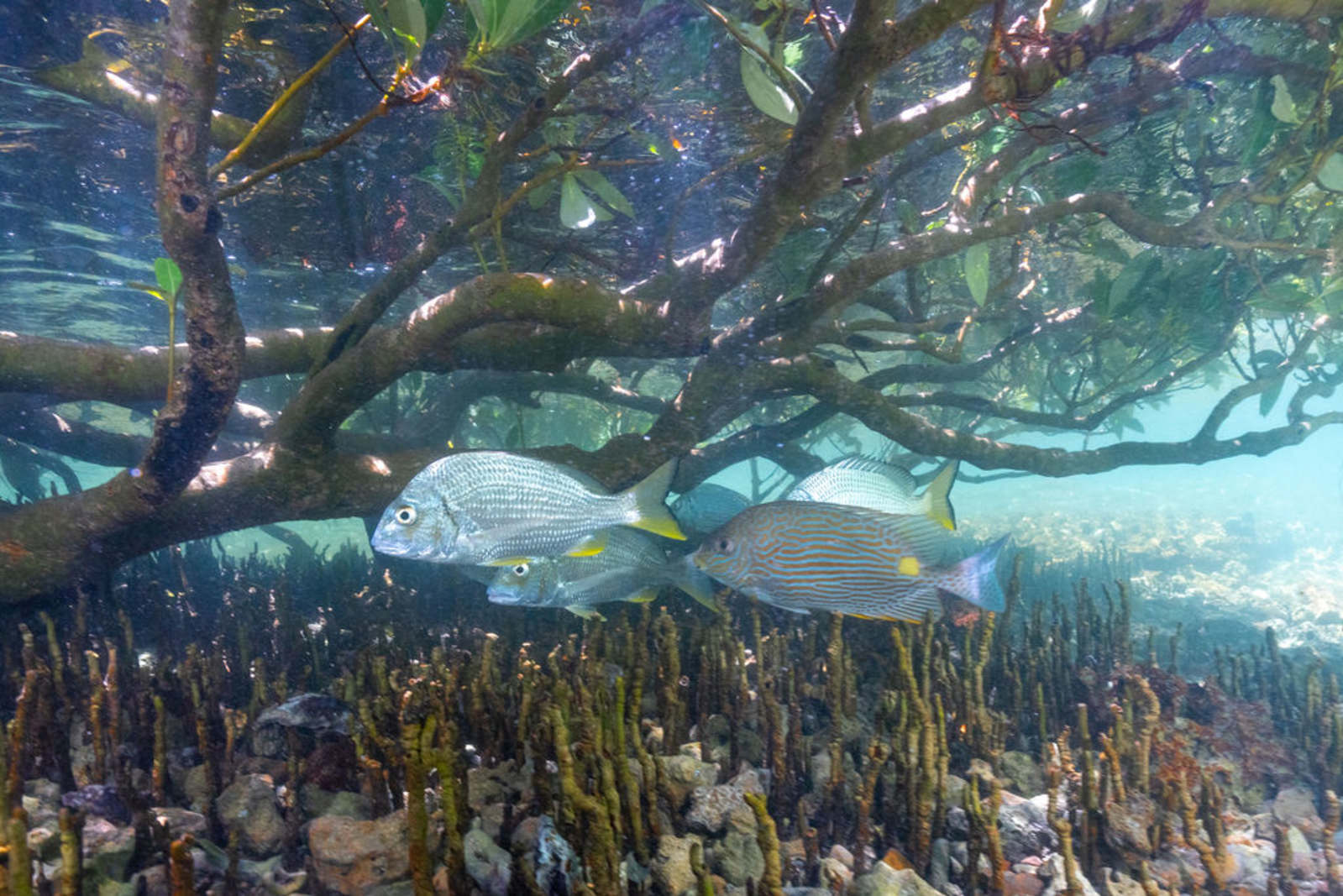 AUSTRALIA - Mangrove forests are important carbon stores and nurseries for marine species and cover a thin strip of coastline in the north-west of Australia, stretching some 4000 kilometres from Shark Bay to around the top of the Kimberley. But despite the advent of satellite technology, the full extent of the remote and hard to access ecosystems has been underestimated for a myriad of reasons including massive 10-metre tides obscuring tree tops in places like the King Sound at the top of Western Australia. The low density of mangroves on the arid Pilbara coast, which has fewer plant species than the Kimberley and trees that do not grow as tall, has also made it difficult to differentiate from other habitats using satellite imagery. A new research paper in the journal Remote Sensing has revealed a 32 per cent increase on previous global datasets for mangrove coverage in WA, taking the total up to 276,538 hectares. READ MORE Like this newsletter? *Articles in this newsletter may mention practices being used and/or show exagerated results being claimed without proof. Stories are presented here in effort to show mangrove related activity around the world and do not necessarily reflect Mangrove Action Project's views or mangrove restoration best-practices. |
ACTION ALERTS
MAP Website en Español
13 Year old Linda Li "Mangrove Adventure" from Kid Dream Art School
Video: Mangroves for the Future WANT TO GET INVOLVED?
Like this newsletter? Pease consider donating to MAP to keep it going. Giving could never be easier
Interested in connecting or working with MAP? Check out our opportunities here MANGROVE ISSUES Want to learn more about mangroves? What is CBEMR? Download MAP's 2 page CBEMR Information Sheet containing links to all MAP's CBEMR resources – CLICK HERE View MAP’s uploaded Videos at Question Your Shrimp Consumer/Markets Campaign! Mangroves: Guidebook to Malaysia – Click Here SHARE MAP'S VISION Our short documentary, Reducing the Risk of Disaster through Nature-Based Solutions : Mangroves
Marvellous Mangroves Curriculum The Marvellous Mangroves Curriculum begins with a simple philosophy – getting future generations to not only learn about, but understand the importance of mangrove forests. VISIT
Marvellous Mangroves Curriculum in Bangladesh - WATCH VIDEO
Like this newsletter? Pease consider donating to MAP to keep it going. Giving could never be easier
"Question Your Shrimp" Campaign Question Your Shrimp - is it really sustainable? Sign the Petition
We strive to keep active links in our newsletter. However, due to circumstances beyond our control, occasionally links to stories may become broken. If you find a link to a story is not functioning, please cut and paste the headline into your browser search bar. In most cases you should be able to locate the original story. Not yet a MAP News subscriber?
|
|
Mangrove Action Project Click here to view past newsletters
|
|
-
The community of adults and youth in Cayman Islands has come together recently to release a series of educational videos. Each is geared to...
-
By Alfredo Quarto, Program & Policy Director Co-founder, MAP There is a rather urgent situation concerning the bio-invasion of the Son...
-
By: Isabel Robinson, MAP Volunteer Intern Some months ago I decided to come to Thailand and do an internship in mangrove conservation, ...
MAP News Issue #596 = April 20, 2024
ENTRIES NOW OPEN! Mangrove Photography Awards 2024 10 Years Celebrating Mangroves GLOBAL - MAP has launched our 10th Mangrove Photograp...




